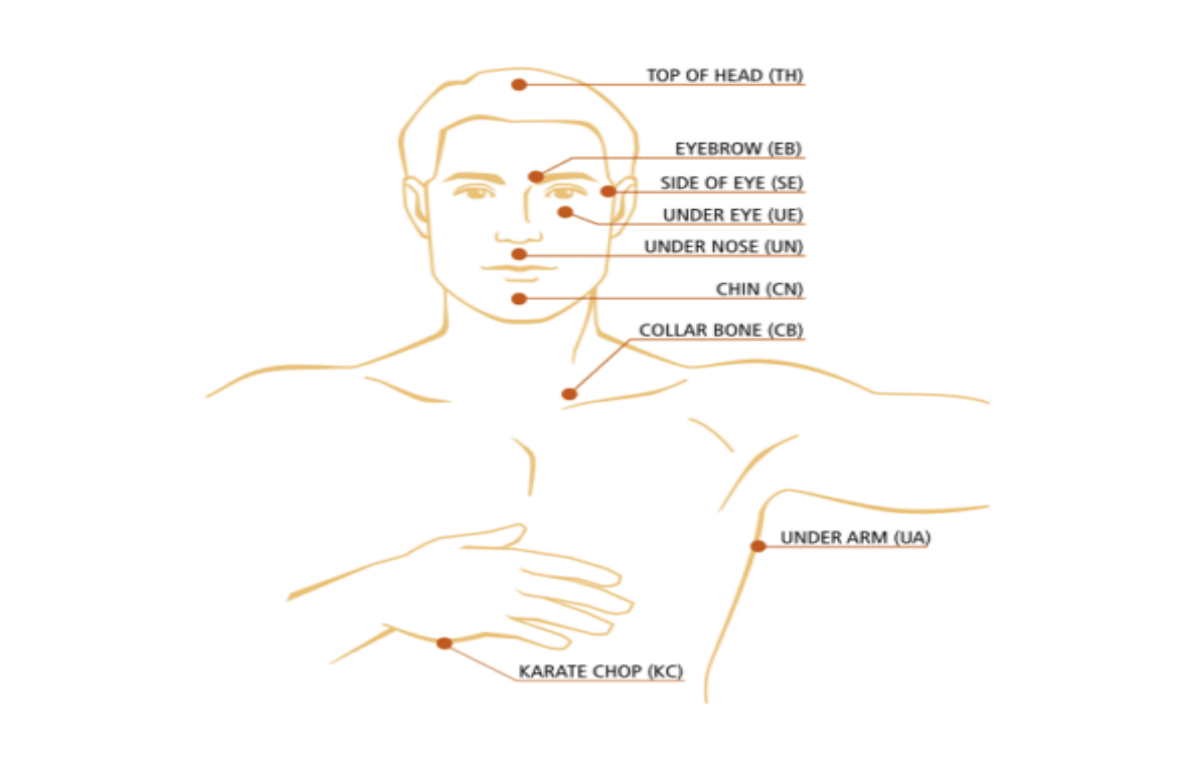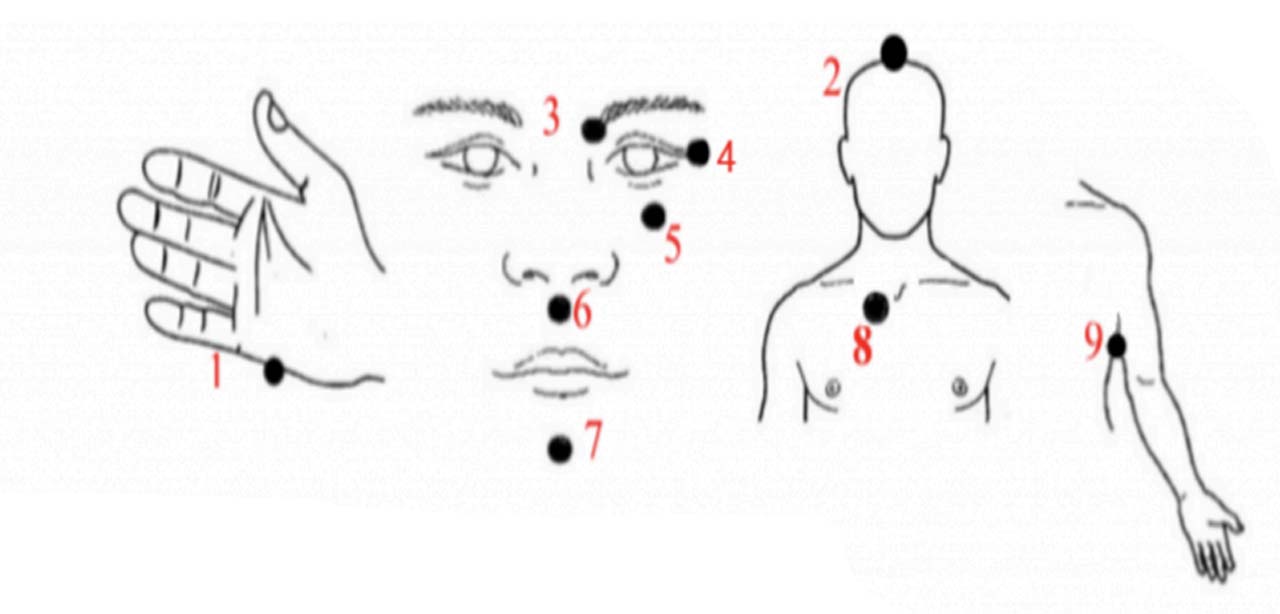Exams are important tools used to measure students’ academic success. However, for many students, exams are not just about measuring knowledge; they are also a source of intense stress and anxiety. Exam anxiety is a psychological condition that negatively affects a student’s performance during exams. As this anxiety level increases, the student’s ability to use their knowledge may decrease and their success may decline.
What is Exam Anxiety?
Exam anxiety occurs when a student experiences intense worry, fear, thoughts of failure, and physical symptoms (such as sweating, palpitations, nausea) before or during an exam. This situation prevents the student from reaching their full potential.
1. What is the Tapping (EFT) Method?
Developed by psychologist Roger Callahan in 1979, Tapping, also known as the Emotional Freedom Technique (EFT), is a method based on energy psychology. In this approach, the acupuncture points used in traditional Chinese medicine are stimulated with light touches using the fingertips. The aim of the method is to provide mental and physical relaxation by reducing the person’s negative emotions and stress levels. During the application, the student says sentences that accept and express their anxiety while simultaneously tapping lightly on specific energy points. Tapping involves making small taps with fingertips on specific points on the body. This promotes physical relaxation and creates a sense of mental calm.
2. How is the Tapping Method Used for Exam Anxiety?
The Tapping (EFT) method is an effective tool for alleviating anxiety experienced before or during an exam. After recognising their feelings of anxiety, students can apply the method as follows:
-
Identifying Anxiety: Feelings such as ‘I am very scared of the exam right now’ or ‘I am worried about failing’ are clarified.
-
Formulating a Core Statement: An affirmation is created, such as, ‘Even though I feel this anxiety, I accept myself as I am.’
-
Tapping on Points: This statement is repeated while lightly tapping specific energy points, such as the forehead, the edge of the eye, and under the chin, with the fingertips.
-
Deep Breathing: At the end of tapping, relaxation is achieved by taking deep breaths.
This method gives students the ability to calm down and control their emotions before exams. Eastern cultures theorise that the free flow of energy is essential for balance and health. In other words, when the life energy in our bodies flows healthily and evenly, we feel good mentally and physically. Introducing such methods to students in schools and counselling units can help them maintain a healthier psychological state during exam periods.

3. The Scientific Basis and Effectiveness of the Tapping Method
-
EFT combines elements of cognitive behavioural therapy and exposure therapy and helps to cope with stress. Research shows that it is beneficial in cases of anxiety, depression, PTSD, and other stress-related conditions, particularly exam anxiety.
-
Furthermore, it has been noted that EFT quickly addresses symptoms and shows its effects within 4 to 10 sessions.

4. EFT Application Points (9 Main Areas)
Nine primary energy points are typically used during the tapping (EFT) process. Each is associated with physical, emotional, and mental states:
1. Karate Chop (Side of the Hand – KC): Small intestine meridian. Applied with affirmations such as ‘I accept myself.’
2. Top of the Head (TH): General energy balancing and stress relief.
3. Eyebrow (EB): Bladder meridian, helps release trauma and emotional pain.
4. Side of the Eye (SE): Gallbladder meridian, can reduce feelings of anger and intolerance.
5. Under the Eye (UE): Stomach meridian, calms fear and anxiety.
6. Under the Nose (UN): Governing energy channel, alleviates feelings of shame and powerlessness.
7. Chin (CH): The central channel reduces confusion and uncertainty.
8. Collarbone (CB): The kidney meridian supports coping with stress and indecision.
9. Under the Arm (UA): The spleen meridian alleviates feelings of sadness, worry, and guilt.
Tapping (EFT) is a practical, effective, and side-effect-free tool for reducing exam anxiety in students. Educators and guidance counsellors can support their students in becoming more balanced and confident during exam periods by teaching them this technique.
References
-
Church, D., & Brooks, A. J. (2010). The effect of a brief EFT (Emotional Freedom Techniques) self-intervention on anxiety, depression, pain and cravings in healthcare workers. Integrative Medicine: A Clinician’s Journal, 9(5), 40-44.
-
Boath, E., Stewart, A., & Carryer, A. (2012). Emotional Freedom Techniques (EFT) reduces anxiety in college students: A randomized controlled trial. Explore: The Journal of Science and Healing, 8(5), 354-359. https://doi.org/10.1016/j.explore.2012.06.001
-
Sezgin, N., & Özcan, B. (2009). The effect of Emotional Freedom Techniques (EFT) on psychological symptoms in adolescents. Anadolu Psikiyatri Dergisi, 10(3), 255-262.
-
Wolpe, J. (1958). Psychotherapy by reciprocal inhibition. Stanford University Press.
-
Sarı, S., & Baştuğ, G. (2021). Üniversite students’ exam anxiety and influencing factors. Turkish Journal of Educational Studies, 8(1), 45-60.
-
Church, D., Stapleton, P., & Yang, A. (2018). Is tapping on acupuncture points an active ingredient in Emotional Freedom Techniques (EFT)? A systematic review and meta-analysis. Journal of Nervous and Mental Disease, 206(10), 783-793. https://doi.org/10.1097/NMD.0000000000000880
-
Eren, F. (2019). Exam anxiety and coping methods: A theoretical perspective. Psikolojik Danışma ve Rehberlik Dergisi, 9(54), 100-115.
-
Vural, P. I., & Aslan, E. (2018). Scope and application areas of Emotional Freedom Techniques (EFT). Yükseköğretim Bilim ve Psikoloji Dergisi, 2(3), 11–25. https://doi.org/10.31461/ybpd.383026
-
Çoban, A. (2019). Tapping Method for those with Exam Anxiety. Adnan Çoban Psikiyatri (web page). adnancoban.com.tr
-
Alkayış, A. (2018). Psychological perspective on exam anxiety and coping methods. Azerbaycan Mektebi / Azerbaijan Journal of Educational Studies, (2), 89–106. ahmetalkayis.com
-
Koçyiğit, E. G. (n.d.). Anxiety and Exam Anxiety: Definition, Influencing Factors and Coping Methods. ASEAD Dergisi. DergiPark
-
Akkaya, M., & Demirtaş Zorbaz, S. (2023). Working with an adolescent with exam anxiety: Short-term cognitive behavioral intervention. Humanistic Perspective, 5(3), 1148–1165. DergiPark
-
(URL-1) https://www.ptsduk.org/emotional-freedom-techniques-or-tapping-for-ptsd/


